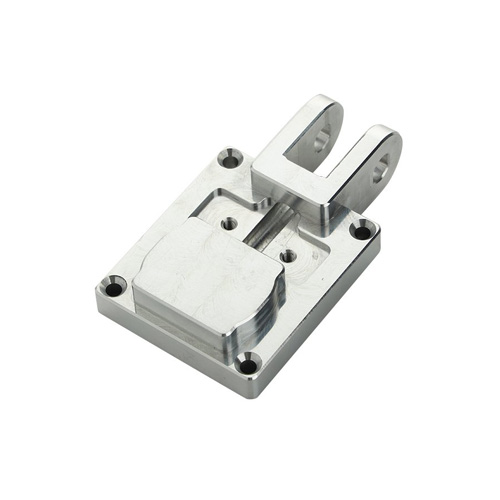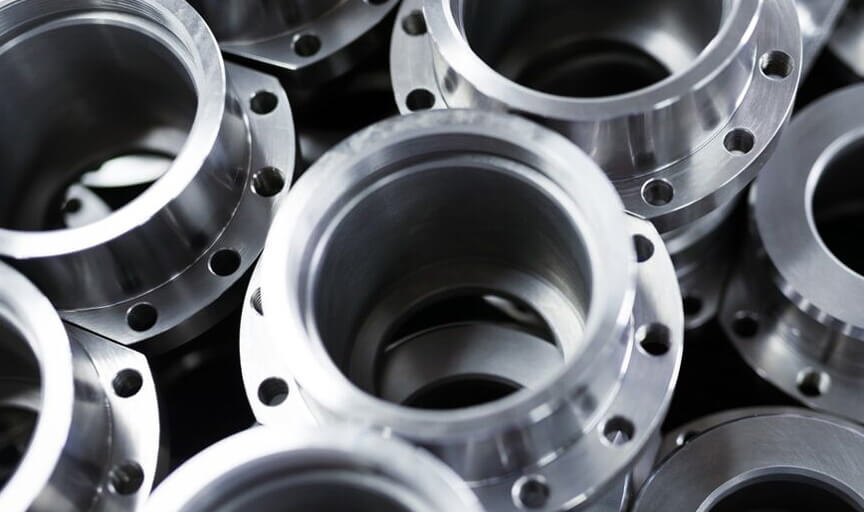- Startseite
- Materialien
- CNC-Bearbeitung von Metall
- Rostfreier Stahl
- Rostfreier Stahl 420
Rostfreier Stahl 420

Material Typ
Metall
Material Name
Rostfreier Stahl 420
Alternative Namen
S42000 | X20Cr13 | 1.4021 | 420S37 | AISI 420
Prozess-Kompatibilität
CNC-Fräsen, CNC-Drehen
Rostfreier Stahl 420 in der CNC-Bearbeitung

Stainless steel 420 comes in various grades, with the most common ones being 420A, 420B, and 420D. These versions differ in carbon content, affecting their hardness after heat treatment.
For instance, 420A or X20Cr13 has ~0.20% carbon and reaches 48-50 HRC hardness. 420B, or X30Cr13 with ~0.30% carbon, achieves 50-52 HRC. 420D or X46Cr13 with ~0.46% carbon, reaches 52-54 HRC. The carbon percentage is denoted in the EN norm (e.g., X20Cr13 means 0.20% carbon). Higher carbon increases hardness but reduces corrosion resistance; 420D has lower corrosion resistance than 420A due to its higher carbon content.
Stainless steel 420 has good machinability but tends to distort because of its high hardness, so we use coated carbide tools with a high cutting speed and low feed rate for turning, milling, and drilling operations. We use proper fixturing to minimize vibrations and maintain dimensional accuracy. We also use water-soluble cutting fluids to dissipate heat and prolong tool life. Heat treatment is applied to improve hardness and other mechanical properties. We use chip breakers and control the chip size to avoid chip nesting and tool wear. We do polishing or grinding for a smoother surface finish. We also do post-process annealing to relieve stresses and enhance corrosion resistance.
Tabelle Eigenschaften of Stainless Steel 420
| MECHANISCHE EIGENSCHAFTEN | |
|---|---|
| Zugfestigkeit (Ultimate Tensile Strength) | 485-750 MPa |
| Streckgrenze | 275-380 MPa |
| Elastizitätsmodul (Elastizität) | 190-205 GPa |
| Dehnung beim Bruch | 15-20 % |
| Physikalische Eigenschaften | |
| Korrosionsbeständigkeit | Mäßig |
| Magnetismus | Magnetisch |
| UV-Beständigkeit | Ausgezeichnet |
| Schweißeignung | Gut |
| Thermische Eigenschaften | |
| Maximale Betriebstemperatur | 144-194 °C |
| Wärmeausdehnungskoeffizient | 9-11 x 10^-6/°C |
| Wärmeleitfähigkeit | 23-27 W/(m·°C) |
| Elektrische Eigenschaften | |
| Elektrischer spezifischer Widerstand | 49-60 μΩ*cm |
Grundkenntnisse of Stainless Steel 420
What is Stainless Steel 420?
Stainless Steel 420 is a type of strong and hard martensitic stainless steel with high durability. It is composed of around 0.15% to 0.40% carbon, 12% to 14% chromium, and small amounts of manganese, silicon, phosphorus, and sulfur.
This steel is also known for its excellent wear resistance and corrosion resistance, which is why it's used in cutlery and surgical instruments. Its hardness can be adjusted through heat treatment.
Advantages of Stainless Steel 420
Contains chromium for excellent corrosion resistance.
High hardness and strength, especially after heat treatment.
Gute Verschleißfestigkeit
Belongs to martensitic class, can be hardened by heat treatment.
Relatively easy to machine for precise dimensions and shapes.
More cost-effective compared to some high-performance stainless steels.
Shows good resistance to certain chemicals.
Retains mechanical properties at elevated temperatures.
Applications of Stainless Steel 420
Mold and Die Components
Medizinische Instrumente
Textile Industry
Komponenten für die Luft- und Raumfahrt
Pump and Valve Parts
Shafts and Bushings
Befestigungselemente
Sportartikel
Automobilkomponenten
Machining Stainless Steel 420 FAQs zum Kauf
Andere Materialien

Rostfreier Stahl 316
Edelstahl 316, auch bekannt als rostfreier Marinestahl, ist aufgrund seiner guten mechanischen Eigenschaften ein beliebtes Material für die CNC-Bearbeitung.

Rostfreier Stahl 304
Edelstahl 304 ist ein in der CNC-Bearbeitung häufig verwendetes Material. Er ist bekannt für seine Korrosionsbeständigkeit und seine mechanischen Eigenschaften.

Rostfreier Stahl 2205 Duplex
Edelstahl 2205 Duplex ist eine korrosionsbeständige Legierung, die aus Chrom, Nickel, Molybdän und Mangan besteht.
Genaues Angebot einholen Für Ihre nächsten Projekte
Ganz gleich, ob Ihr Projekt kompliziert oder einfach ist, ob es sich um Metall oder Kunststoff handelt, Sie erhalten innerhalb von 6 Stunden ein genaues Angebot.
Heute ein Angebot einholen